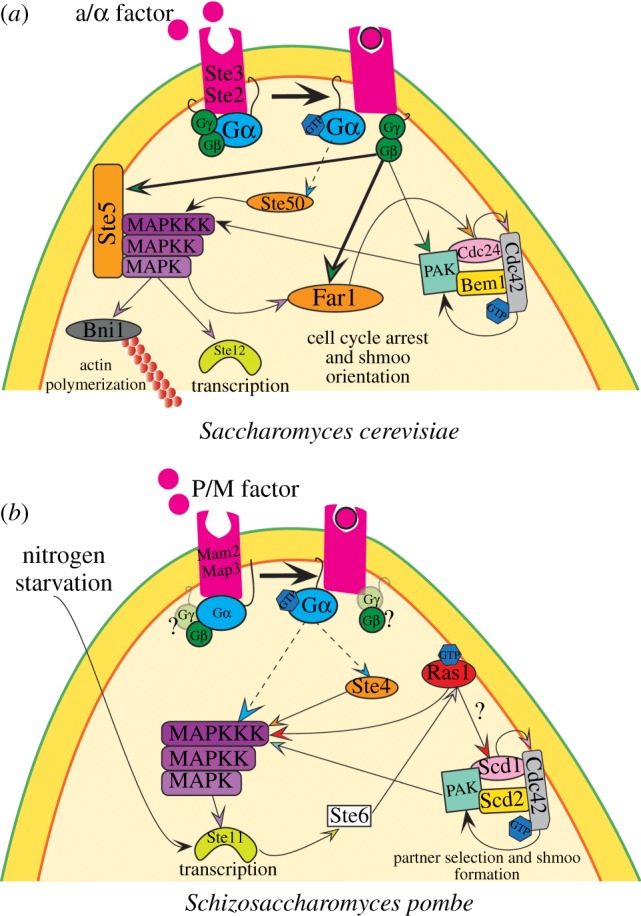Figure 2.

Mating signalling in budding and fission yeast. Pheromone binding to its G-protein coupled receptor leads to Gα activation (Gα-GTP) and dissociation from the Gβγ heterodimer, and activation of a conserved MAPK cascade that leads to the transcription of mating-specific genes, cell polarization in the direction of partner cells and subsequent fusion of mating pairs. (a) In budding yeast, the signal is transmitted by the Gβγ dimer, through Gβ interactions with several effectors. Notably Gβ regulates the activity of two distinct scaffold proteins to activate the conserved MAPK (through Ste5) and Cdc42 (through Far1) modules. (b) In fission yeast, the transcription factor Ste11 is activated upon nitrogen starvation and regulates the expression of essential signalling genes, such as the Ras1-GEF Ste6. Gα is responsible for signal transmission in this organism and appears to activate the MAPK cascade (directly or indirectly) cooperatively with Ras1 and the scaffold Ste4. Dashed arrows indicate hypothetical interactions; question marks indicate components not yet identified (pombe Gγ) or interactions not specifically demonstrated during mating (Ras1–Scd1). See text for details.
